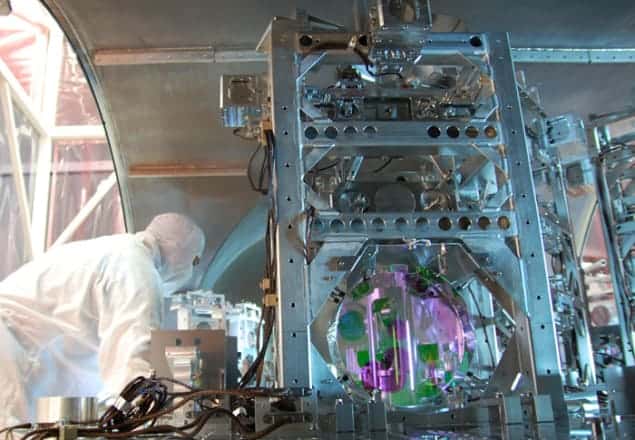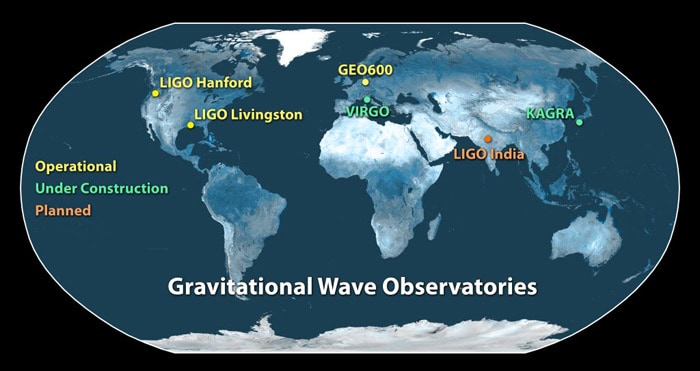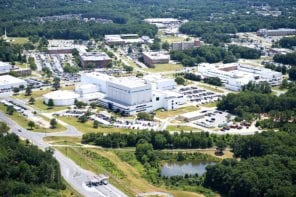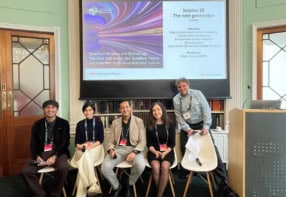
Hot on the heels of last week’s monumental discovery of gravitational waves – made by researchers working on the Advanced Laser Interferometer Gravitational-wave Observatory (aLIGO) in the US – India’s Union Cabinet has given its “in-principle” approval for a similar observatory, dubbed LIGO-India, to be built in the country. The project will be led by the Indian Initiative in Gravitational-wave Observations (IndIGO), which has been a member of the international LIGO collaboration since 2011 and contributed towards last week’s discovery. Once built, LIGO-India will join the global network of LIGO observatories, which currently includes the US, Germany, Italy and Japan.
LIGO-India will be backed by the government’s Department of Atomic Energy (DAE) and the Department of Science and Technology (DST), together with its US counterparts. Indeed, Indian prime minister Narendra Modi gave his approval this morning via a series of tweets, saying that the “LIGO-India project will establish a state-of-the-art gravitational-wave observatory in collaboration with LIGO Laboratory run by Caltech and MIT”. Modi added that LIGO-India will also bring “considerable opportunities” in cutting-edge technology for Indian industry. “The project will motivate Indian students and scientists to explore newer frontiers of knowledge and will add impetus to scientific research,” he tweeted.
Global eye on the sky
The aLIGO collaboration last week announced that it had detected gravitational waves produced from the collision of two black holes of 36 and 29 solar masses some 1.3 billion light-years from Earth. The holes had merged to form a spinning, 62 solar-mass black hole, in an event dubbed GW150914. The signal revealed the characteristic “chirp” waveform of such an event, and LIGO collaborators in India, including Bala Iyer from the Raman Research Institute in Bengaluru and Sanjeev Dhurandhar at the Inter University Campus for Astronomy and Astrophysics in Pune, were instrumental in calculating and simulating such waveforms.
“It is heartening to see the involvement of many young scientists in India in this discovery”, says LIGO member B S Sathyaprakash, from Cardiff University in the UK.
For GW109914, a signal was picked up by both of LIGO’s US observatories, in Hanford, Washington, and in Livingston, Louisiana, which are separated by 3002 km. But researchers are keen to refine their observations and improve their measurement sensitivity by having a global network of detectors, which would simultaneously detect incoming gravitational-wave signals and reveal more about where they come from.

Worldwide network
With each added observatory, the researchers can pick up even more signals, boosting the chances of a confirmed wave. Such a network would also let researchers narrow and localize the gravitational-wave’s source in the sky – with two detectors, LIGO can currently only gauge the general direction from which the waves have come. Pinpointing a fixed location requires data to be combined from geographically separated detectors.
Apart from the two LIGO observatories in the US, astronomers have access to data from the GEO600 detector in Germany, which is currently online, while the Virgo detector in Italy (HHLV) and the KAGRA detector in Japan are both currently being upgraded (see map above). According to the IndIGO collaboration, adding a new detector in India a long way from existing detectors would “dramatically improve the source-localization accuracies (five to 10 times), thus enabling us to use gravitational-wave observations as an excellent astronomical tool”.
It is still, however, early days for LIGO-India, despite the positive global reaction to last week’s discovery of gravitational waves. Although Satyaprakash says he is “absolutely delighted, as this is what our Indian colleagues were seeking”, he told physicsworld.com that the government should now release funds for exploratory work and submit a “detailed project report” for full approval. “In a way, the real work starts now,” he says. “When the full approval comes this will be a new chapter in Indian science but we need to wait until then.”



